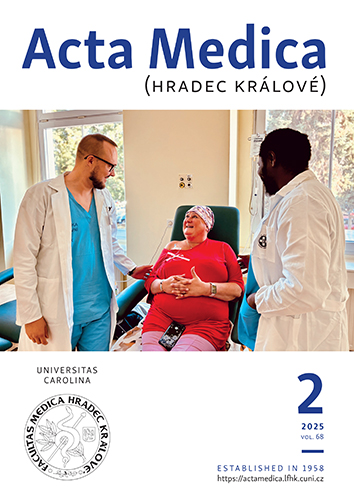ACTA MEDICA, Vol 59 No 2 (2016), 43–49
Associaton of Atrial Fibrillation with Morphological and Electrophysiological Changes of the Atrial Myocardium
Adéla Matějková, Ivo Šteiner
DOI: https://doi.org/10.14712/18059694.2016.88
published online: 10. 08. 2016
abstract
Atrial fibrillation (AF) is the most common sustained cardiac arrhythmia. For long time it was considered as pure functional disorder, but in recent years, there were identified atrial locations, which are involved in the initiation and maintenance of this arrhythmia. These structural changes, so called remodelation, start at electric level and later they affect contractility and morphology. In this study we attempted to find a possible relation between morphological (scarring, amyloidosis, left atrial (LA) enlargement) and electrophysiological (ECG features) changes in patients with AF. We examined grossly and histologically 100 hearts of necropsy patients – 54 with a history of AF and 46 without AF. Premortem ECGs were evaluated. The patients with AF had significantly heavier heart, larger LA, more severely scarred myocardium of the LA and atrial septum, and more severe amyloidosis in both atria. Severity of amyloidosis was higher in LAs vs. right atria (RAs). Distribution of both fibrosis and amyloidosis was irregular. The most affected area was in the LA anterior wall. Patients with a history of AF and with most severe amyloidosis have more often abnormally long P waves. Finding of long P wave may contribute to diagnosis of a hitherto undisclosed atrial fibrillation.
keywords: Atrial fibrillation; Isolated atrial amyloid; Myocardial scarring; Electrocardiographic features; P wave

Associaton of Atrial Fibrillation with Morphological and Electrophysiological Changes of the Atrial Myocardium is licensed under a Creative Commons Attribution 4.0 International License.
210 x 297 mm
periodicity: 4 x per year
print price: 150 czk
ISSN: 1211-4286
E-ISSN: 1805-9694
